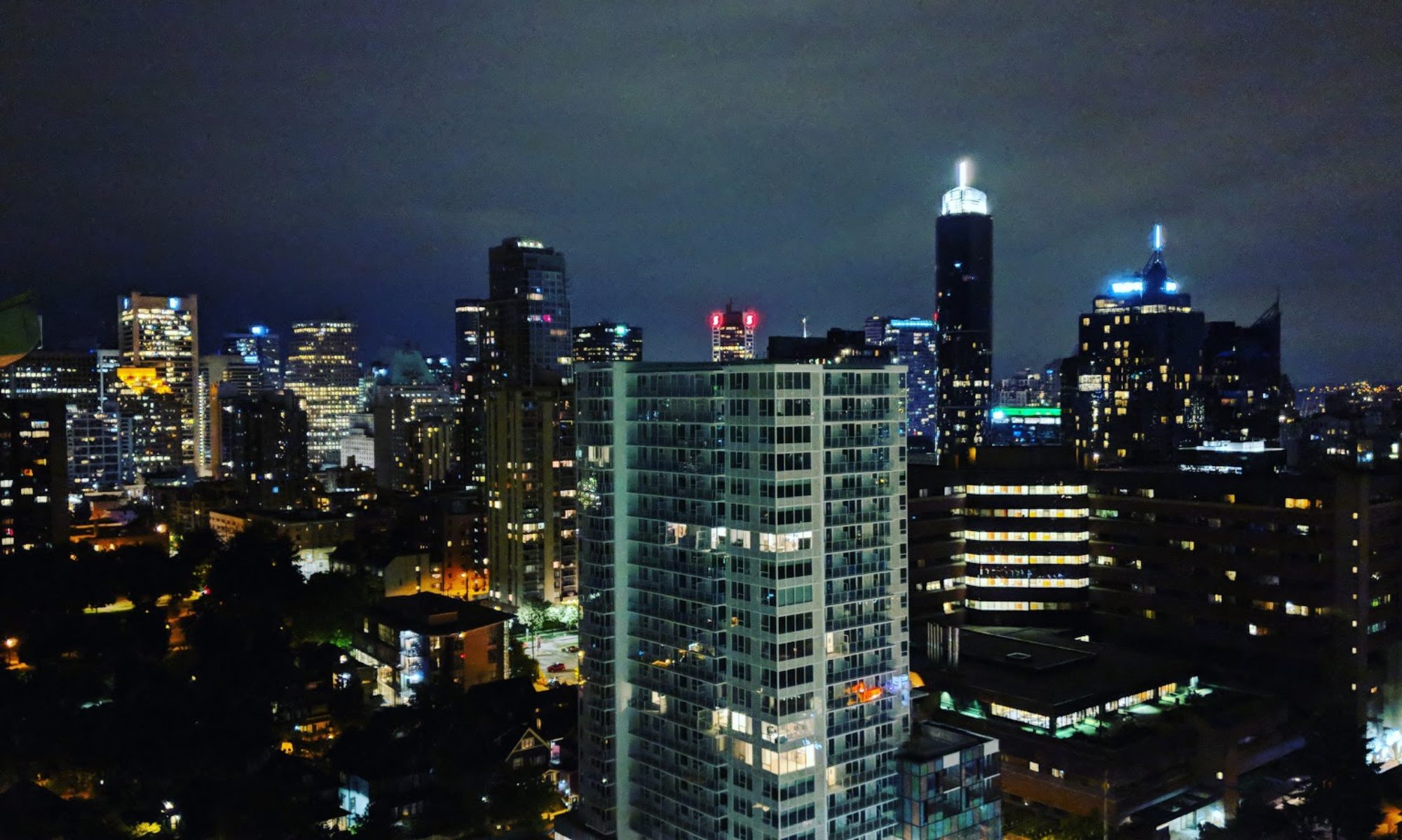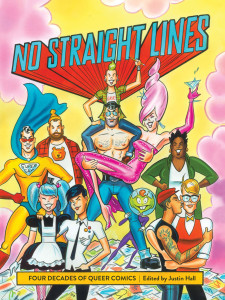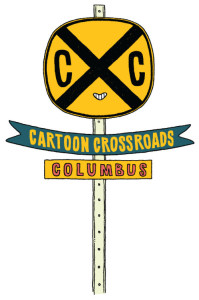So, I’d been meaning to write something about this since things erupted last month on Denise Dorman’s blog [link]. But the topic is a very, very big one, and I couldn’t wrap my head around the entirety of it, and still can’t, and so I’d resisted anything other than a few tweets on the subject. I do think, though, that there are a couple of very basic truths on the subject that I can get out here, so let’s dive in and see where this takes us:
1. The make-up of the attendees of comic book conventions is changing.
I’d say this is a no-brainer, but for those in the cheap seats: There are more fans of nerd-culture things, like superhero comics and science-fiction, than there have been in a very, very long time. The success of DC and Marvel’s movies, the easy availability of sci-fi and fantasy on specialty cable networks, the goddamned Big Bang Theory, all of it has contributed to ‘geek’ culture being embraced by the widest swath of people in history–with the possible exception of Star Wars and Star Trek on the big screen from 77-85. Despite the fact that I have been going to comic-cons since 1994, and despite the fact that I have been going to Comic-Con since 1999, my mom finally figured out what Comic-Con was last year and that’s basically the only dividing line that anyone needs.
Because of this, the interest in comic-cons is increasing, attendance is up at most shows, and the audience is significantly different from the ‘initiated’ or ‘hardcore’ fans that made up the bulk of attendees as little as five years ago now.
2. The make-up of comic convention organizers is changing, too.
Here’s the one that’s not getting as much play. Comic-cons have always been half way between a labour of love and something resembling a scheme, but their incredible success has attracted a lot of people and organizations in recent years that had previously stayed away due to the specialized nature of the events. Because the sorts of material covered by comic-cons is now material that’s largely in the mainstream, it has gotten much, much easier for those sorts of organizers only tangentially in the know to put together a show that will draw a crowd. The ‘gentleman’ who’s running the Salt Lake Show trying to challenge San Diego’s TM on Comic-Con, or the large-scale trade show organization that has been buying up medium-sized and large-sized shows, like the one in Toronto a few years ago… Comics conventioneering has a long and great history of events being run by passionate businesspeople, passionate groups of fans getting together to organize events, and other only-vaguely capitalist types. It has a history of hucksterism and scam artists too, but it’s getting a heckuva lot tougher to tell the well-funded and well-run show from the guy who’s trying overselling admissions to cram as many people through that door and who doesn’t give a damn about the exhibitors, attendees, or the fire code for that matter…
The person in charge of an event matters, a lot. Most fans don’t really do the research or even care who’s running the show, as long as they get the access that they crave (access to guests, access to goods, access to other fans). I’d even wager to say most attendees don’t really know the actual name of the show they’re at. Speaking from personal experience we still get fans, exhibitors, and artists that can’t tell the difference between TCAF (indy show, May every year since 2009, set in a library since 2009) and Fan Expo (fan show, August every year for a decade, at the convention centre). That sort of… undiscernment… is to everyone’s own detriment, but you can’t force people to be good consumers, and that lack of discretion always has collateral damage, as badly run shows negatively impact impression of all shows.
3. Professional Fans & ‘Personalities’, which is to say Youtubers, Professional Cosplayers, etc.
I think Denise Dorman’s railing against the ‘instagram’ generation is hilarious but actually has a point–she’s just not using the best terminology to describe what is an actual phenomenon–before 5 years ago, no one (in their right mind) would go to a show thinking that they were an ‘attraction’ without buying themselves an exhibition space, a booth, an artist alley table, something. However, in the last few years the number of people who think that a badge (whether paid for or comped) entitles them to an audience within a convention space is on the rise dramatically. It’s been pegged as cosplayers, and honestly there are more cosplayers at shows than ever, and more professional cosplayers who are going to shows to make money and build an audience. Cosplayers attending shows as businesspeople, who aren’t contributing to the economy of the show.
But professional cosplayers (and I think there’s an important distinction there between people who cosplay and people who earn money cosplaying) are literally nothing compared to the other social media personalities who have begun to call comic-conventions theirs. Where previously you had nerdlebrities like Wil Wheaton building a social media empire out of their cred, today’s social media personalities have amassed huge followings through their postings, videos, and photos on YouTube (largely) and other video and media services. They are the product, they have 100,000, 200,000, 300,000 subscribers on social media, and they announce that they’re going to COMIC-CON X and all of their fans should meet them there. It’s easy to see how that’s a boon for a convention looking to sell tickets… they get a crazy-popular ‘guest’ and they don’t have to do any of the work of actually bringing this personality as a guest. The dude with the media badge AS the thing being covered. But tell me that a fan motivated to go to a comic show to see a dude who talks about shit on Youtube is gonna buy the same way, at the same level, as the fan motivated to go to a comic show because she likes comics.
(This also includes the type of Pro-Fan who has a thriving eBay store, an Amazon store, who is a toy-hunter or exclusive-hunter, basically any sort of fan actively deriving income from attending a convention)
Which brings us to point four.
4. Comic Conventions Are Filling Up And Selling Out, Earlier and Earlier
So all of the above, all of it, almost-completely doesn’t matter at a comic convention with infinite size and infinite space. In that situation, then, yes, it DOES come down to how good of a salesperson Denise Dorman’s husband is, because (in theory) every potential customer will walk by his booth and make a decision about purchasing his wares.
But comic conventions are not infinite. San Diego sells out the year before. New York sells out months out. Emerald City sells out eight months out. I could name a dozen more shows that sell all of their tickets well before the doors open. What that means is that demand is higher for tickets than there were tickets available. So when that happens, you’ve got to ask yourself, what ‘type’ of fan got the tickets before they sold out? Probably the most-dedicated fans. The fans most-in-the-know about how shows are run these days. And, probably, The Professional Fans, who while not exhibiting nonetheless derive income from being at that show. And when your casual buyer who just wants to go to a show and maybe drop some money on comics can’t make it, because she didn’t want it bad enough, well sir I think it’s safe to say that it’s going to be a different kind of sales show for exhibitors, that’s for sure.
Now until this point, all of this has been more or less neutral, as far as I’m concerned. Like I said, I believe that these are truths about the business–the way things are. I don’t particularly think these new fan economies within shows are good or bad, because there’s clearly a give and a take between all involved. Capitalism, you know? It’s where advice like the somewhat facile “Adapt or Die” comes into play… If the economy of shows is changing, adapt to it and make your money. Sure, why not.
However, I actually do have opinions about this stuff, beyond the statement of simple truths. Here goes.
The changing convention landscape is inherently shitty for people who make comic books. Art comix, indy comics, mainstream comics, whatever comics, the changing makeup of conventions is hostile to people who want to make and sell comics at comic conventions. And let me be clear, this is comic books and graphic novels, as opposed to ‘prints’ or crafts or whatever manner of tchotchkes makeup most exhibitor tables these days. Basically, comic book conventions are aggressively attracting an audience who don’t necessarily value books, or comic books.
This is sure to be controversial, so before you scroll down to leave an angry comment, please hear me out.
Let’s go back to points 1 to 4 a bit, and talk about those points okay?
1. I think it is a very safe assumption that people who come to comic books, sci-fi, or fantasy through adaptations in other media like television, film, video games, don’t necessarily place the same value on the medium as the message. Sure, some of them become converts–it’s hard not to! Comics are great. Novels are great. But I’d say a large percentage don’t really care about the original media, they’re just interested in the story (or if I’m being less generous, the ‘property’). This is bourne out by my experience as a comic retailer and convention exhibitor for the past 20 years or so.
2. The changing make-up of convention runners means that more and more people are entering the field who could give two-shits about anything other than paid admissions and filling the con floor with whomever has the money to pay. There are still lots of great shows, lots of great con-runners, but their are very few shows at all with an ideology, particularly one that values comics. This has a pronounced effect.
3. I don’t mean to beat this particular horse any further, but let me just say there are no vloggers or YouTube personalities with 300k followers regularly talking about comics, to my knowledge. Games, current events, their own lives, but if there’s some sort of comics vlogger out there that’s defining a generation of criticism and winning new fans, please let me know! I’d love to subscribe. Professional fans, again, are there for their own reasons.
4. I’d say hardcore comics fans are just as likely to be extremely motivated to jump through the necessary hoops as Pro-fans, as personalities, as people heading to shows like they’re a “Nerd-Happening”, to attend sold-out shows. But that does leave the casual attendee or comics fan out in the cold, and being able to convert those casual attendees is what the prior economy of shows is built on.
All of this adds up to fewer folks that actually care about getting comics at a comic con. Again, I want to stress: I have 20 years of exhibiting at shows, including Comic-Con, backing this up.
When you have people who are attending and otherwise interacting with comic conventions who aren’t coming at them from the direction of comic books (whether physical or digital, I should clarify), then the folks who aren’t selling books are at a tremendous advantage in battling for the dollars to be earned from an attendee’s wallet. There is a very different perception in value of a book or a comic book, or a print/craft/tchtchoke. At a show like this, if you’ve got a $20 Punisher comic on a table, a $20 Punisher action figure, and a $20 11×17 colour photocopy depicting The Punisher next to each other on a table, you are going to sell that 11×17 Punisher colour photocopy 7 times out of 10, the toy twice, and the comic book once. And it doesn’t matter if the comic is full price at $20, half price at $20, or if the artist himself is there and selling the Punisher comic with an autograph. The print, almost always the print.
Example: I have exhibited at shows for UDON, and had a $40 (really nice lithograph) Street Fighter print on the table, and a 200 page Street Fighter book which contained the image on the print and 190 other images, also for $40, and the print always sold first. When I asked the customer why they didn’t go for the book with the image they loved (reproduced at a nice size, I should add) instead of the single image, the answer always came down to the print feeling like an object with higher perceived value.
The same goes for other merch. There’s a thriving world of grey-market collectibles based on other peoples’ intellectual property out there, and honestly as long as the creators (if not the IP holders…) are fine with it I don’t really care. But being an exhibitor, or being in artist alley, and having a book versus having a piece of merchandise is not a level playing field, it just isn’t. Which, again, is not to say that the unleveled field cannot be overcome. In a vacuum, again, that’s fine, that’s capitalism, but:
- It’s not a vacuum, because of points 1, 2, 3, and 4, and
- Comic-cons have traditionally (and until very recently) been places that have been immersed in book-culture, have been pro-book, and whose attendees value the medium.
Saying “Adapt or Die” to someone who has been placed at a severe economic disadvantage by forces entirely beyond their control in the space of 2 or 3 years is, at best, terribly unsympathetic. And I don’t mean to pick on the writer of that piece specifically, but that response is emblematic of the responses I’ve seen to Denise Dorman’s pieces, that (without knowing anything about her or her husband’s con setup) they just weren’t trying hard enough, ‘and have you considered making eye contact with people and not hating cosplayers.’ I mean… ugh. That poor woman. Anyway.
So, in short: The makeup of contemporary comic conventions has changed dramatically, and is changing, at every single level. The deck has become stacked against people selling book product (and particularly original book product versus licensed or tie-in material, in my opinion). I think every creator out there should think long and hard about the shows they do, how much money is being charged of attendees, who their fellow exhibitors and guests are and what that says about what sort of show they’re likely to have. Moreover, it would be nice if more comic book conventions made a concerted effort to privilege comic books (and novels) in the make-up of their shows at all levels, to at least attempt to level that playing field a little. Creating an environment where comics, and their creators, are celebrated is positive in a great number of ways, not the least of which because those television shows, films, and video games are going to have to come from somewhere, and it would be nice if comics creators could at least break-even at a show where they’re trying to promote their work, and the medium.
So those are my thoughts–a few things that I don’t think are being talked about, and some conclusions I’ve drawn from them. I’ve enjoyed reading other folks’ responses to this issue, and if you’re reading this 2500 words later I appreciate you taking the time to read mine.
Thanks,
– Christopher
P.S. and Full Disclosure: For those of you new to my writings, hi! I Manage a shop called The Beguiling in Toronto. I co-founded and am Festival Director of The Toronto Comic Arts Festival. I’ve also been involved in the running of comics conventions, and have been making and promoting comics for quite a while now.
















